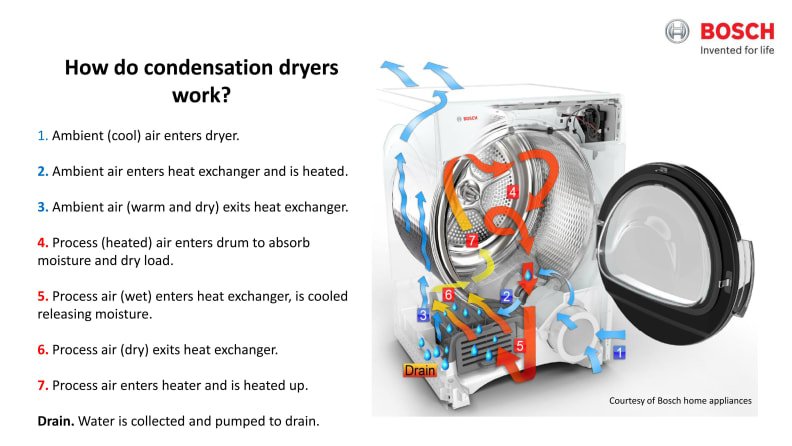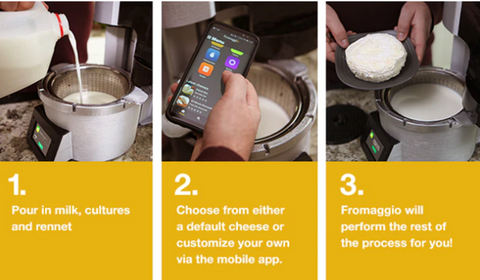Air Fryers, Multi-Cookers and Slow Cookers, They can't actually do everything?
Table of Contents:
So many of us get new kitchen toys for Christmas or just after Thanksgiving. They go on sale and we go "Ooh shiny!" And honestly? That's great! Anything that gets people cooking more and spending time experimenting with food is good in our books (and not just because we're an appliance repair company.) The thing is though, what /can't/ those tools do? What do you never want to put into a slow cooker? Or your airfryer? What about the shiny new Instant Pot? They all have things that you don't want to try and make with them, but no one really says what they are. They just talk about all the wonderful things they have made. That's where this post comes in. We're taking a look at some of the things you really shouldn't ask of your kitchen tools.
Slow Cookers
Ahh, our beloved slow cookers. They're great for summer, and busy days, and any time you need to keep a lot of food warm over a long period, without destroying it. We love them! Unfortunately, there are some food types that they just don't handle well due to the way they're designed.
-Slow Cookers Don't Do Well With Lean Meats
While you /can/ cook them in a slow cooker, it's extraordinarily difficult to get them to come out right. You want your meat to be tender and flavorful, not dry and tough. Unfortunately, the leaner a piece of meat is, and the longer it's exposed to heat, the tougher and dryer it becomes. For a cut like a tenderloin, sirloin or round roast, the longer you keep them cooking, the more likely they are to toughen up. Rather than having to baby them, which defeats the purpose of the slow cooker, it's better to a) choose a different cut of meat with more fat to it, or b) cook the meat a different way to ensure it remains the most flavorful.
-Slow Cookers Can't Cook Fish
Much like lean meats, fish are finicky. They don't need to be heated for long periods. They'll either break down and become indistinguishable from the rest of the food, or become horribly overcooked.
-Slow Cookers Are No Good for Recipes That Need to Be Seared
Slow cookers do low, moist heat over a long period of time. Searing uses a high heat and very short period of time. Your slow cooker just can't do that.
Air Fryer
Your air fryer is designed to dry cook food quickly and at high temperatures, circulating air and oil around the food. This leads to an even cooking that is going to dry foods out, which doesn't work out well for some types of food.
-Air Fryers Are No Good For Fibrous Vegetables
An air fryer is meant to heat foods up quickly and fry them similar to a deep fryer, but without all of the fat. Unfortunately, when it comes to fibrous vegetables, they don't do good with this method of cooking. They need longer cooking times in order for them to break down and become soft enough to eat.
Some examples of fibrous veggies are asparagus, green beans, beetroot, bok choy, broccoli, brussel sprouts and cabbage.
-Air Fryers Aren't Good for Feeding Large Groups of People
No, we're serious on this one. Unless you want to be in the kitchen making round after round of food and not actually getting to enjoy spending time with anyone, we don't advise trying to feed a large group of people this way. An air fryer just doesn't have the capacity for that much food, unless you bought an industrial one, in which case, be our guest!
-Air Fryers Don't deal well with Battered Foods
Well, to be more specific, they don't deal well with wet battered foods. Think of things like fried chicken, corn dogs or fried oreos. All of those are a wet batter that you dip the food into and then fry. That doesn't work in an air fryer because the batter falls off through the tray or just slides off the food entirely, leaving things less than ideal.
-Air Fryers Aren't Good with Soft or Sticky Ingredients
If it's likely to stick to other things, or the basket, your air fryer won't like this. Air fryers are meant to have air circulating around all of the pieces, and things that are sticky are going to make that difficult.
Multi-Cooker
It can pressure cook, it can fry, it can act like a crock pot, it can even saute or make yogurt! What can't a multi-cooker do? Well, there are a few things.
Multi Cookers - There's No Point If You Can Make it On The Stove
So if you've had your multi-cooker since Christmas, as many received them for gifts this year, you've probably learned this. Your multi-cooker will almost always require time to come up to pressure. That, plus the amount of time it takes to actually cook whatever you're wanting is typically going to be more than 12 minutes. So, if it's faster to cook it on the stove? Do it that way.
Multi Cookers Don't Like "Add As You Go" Cooking
Bouncing right off the last idea of 'pressure' means that your multi-cooker doesn't really like recipes that require things to be added in stages. It's great for foods that can be done all in one go or are just a portion of the final meal. Say you're making seasoned beans as part of your burrito night. That, your multi-cooker is great for! But if you want to make a soup? Where you're constantly adding things at different times? Not so much. For each step that you have to pause the cooking mode, let the seal release and then come back up to pressure once you've added it, it's just not going to end well.
Multi-Cookers Ruin Delicate Vegetables
Delicate vegetables like leafy greens, fine curls of carrots or your multicolored green beans shouldn't go into a multi-cooker. The vegetables don't stand up to the high heat and pressure of the multi-cooker and you end up with a gross mush of what used to be perfectly delicious vegetables.
A few more examples of delicate vegetables:
Zucchini
Lettuce
Snap Peas
Snow Peas
Asparagus
Tomatoes
Fennel
Multi-Cookers and Dairy Don't Mix
But Blogger!, we hear you cry, you said that we could make yogurt! That's a dairy!
And you are right dear reader.
The thing is for the pressure cooker aspect of a multi-cooker, that's when you can't use milk or milk products. They'll boil over and scorch. They can also foam or froth depending on how you treat them, which will clog up your steam release valve, which is a guaranteed route to danger. (Check out our post on dangers in the kitchen to see more on that one. ) Last but not least, whenn putting milk into a pressure cooker you run the risk of the milk separating and giving you a seriously gross outcome.
We know that many people have done in-depth experiments with their different kitchen tools finding ways to work around these issues. Some of them work, some of them don't. We will say that we're talking in general about what these tools can do, and not hunting down the arcane secrets that people have discovered. If we can't test them ourselves, we don't want to recommend them to you. And trying to test all of the possibilities out there would end up being a VERY large grocery bill haha.
Have you found a way around any of these issues? Or do you have lists of foods that we missed? Let us know in the comments below or over on our Facebook page, as always we'd love to hear from you!
What happens though if you ended up here because your larger appliances are giving you fits (sadly we don't work on any of these smaller appliances just yet.) Not to worry, you're in the right place. We work on all of your major appliances, including dishwashers, washing machines, dryers, refrigerators, ovens, stoves, and ice machines. Whatever it is that's making you want to tear your hair out, we've got you covered. At Appliance Rescue Service, we're not satisfied until you are. You can get hold of us by giving us a call at ((214) 599-0055 ) or by going to our contact page and setting up an appointment that fits your schedule.









